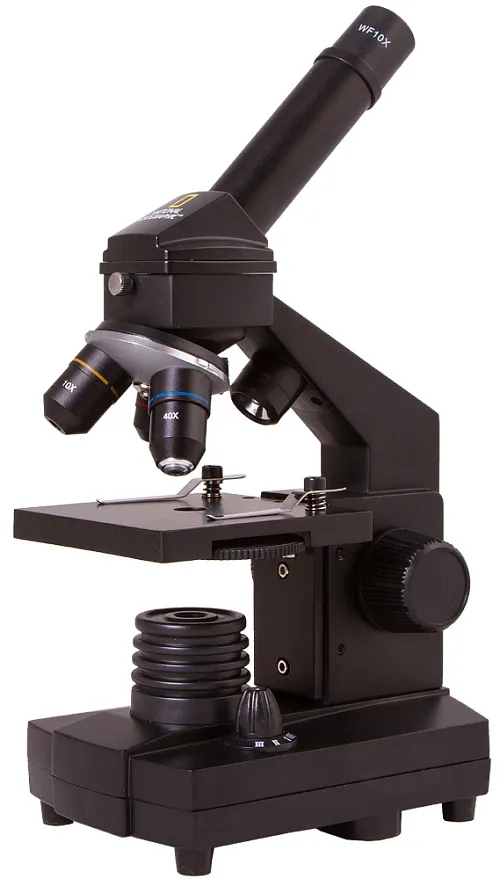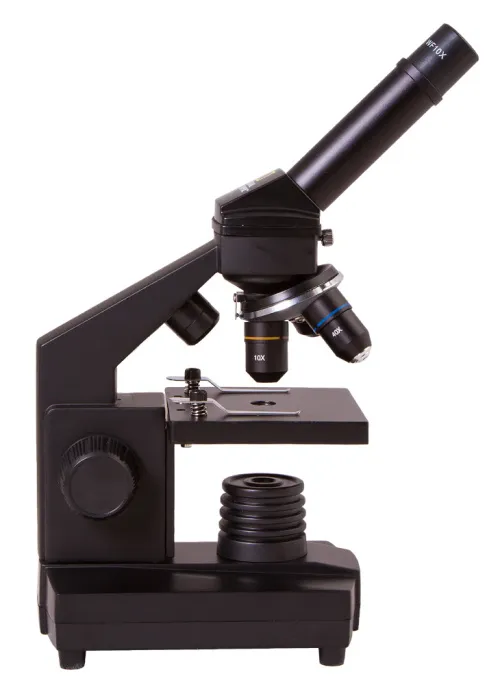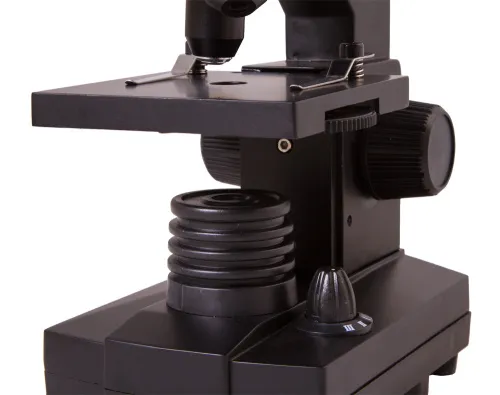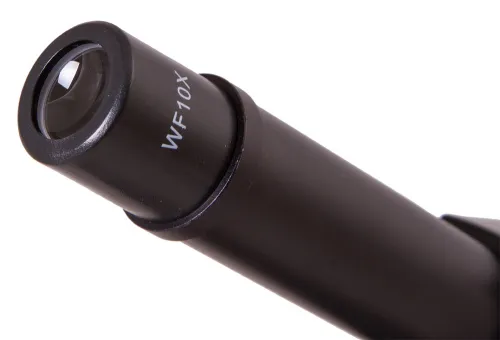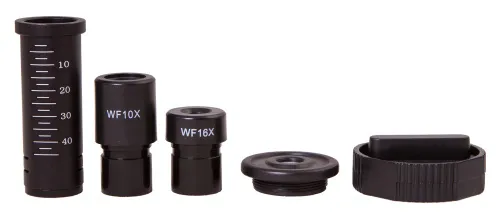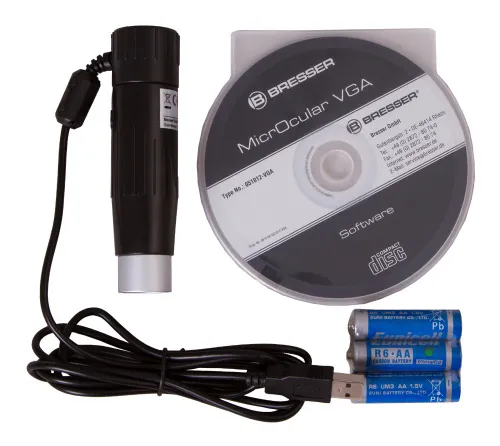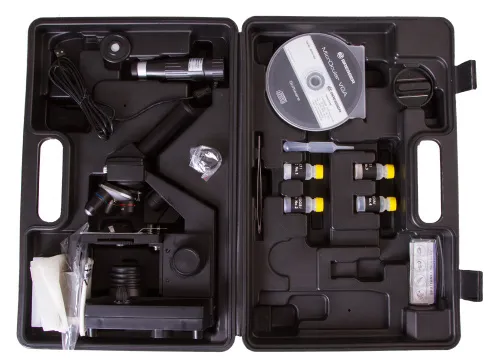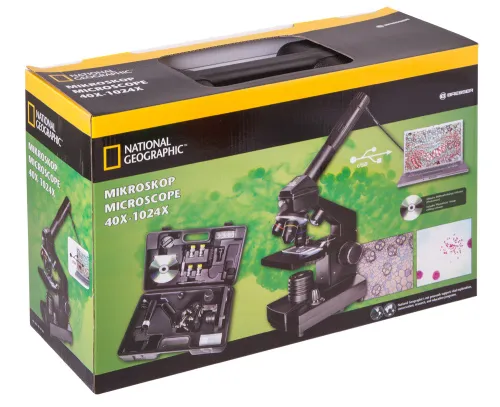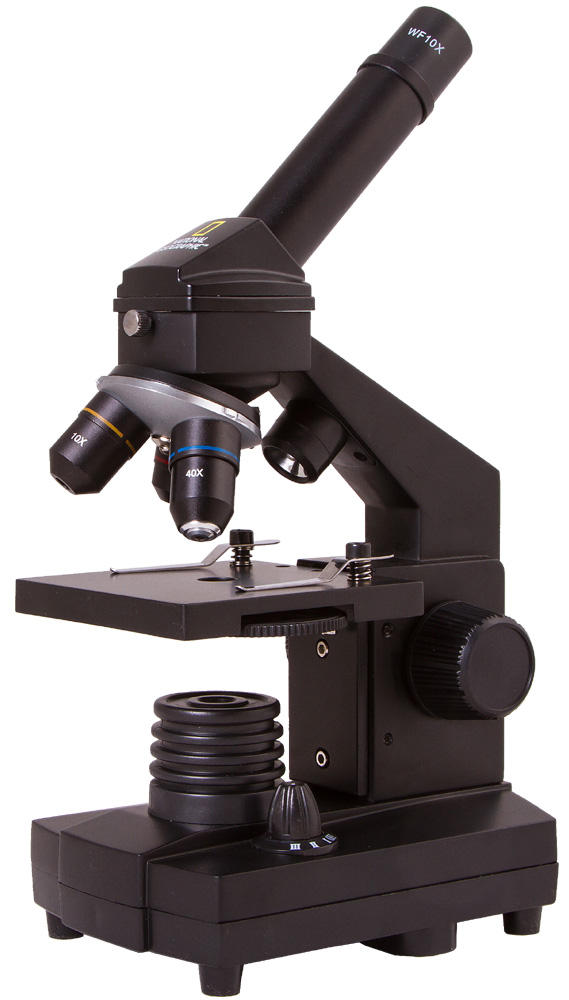Bresser National Geographic 40–1024x Digital Microscope with case
Microscope for beginners. Magnification: 40–1024x. For observations in reflected and/or transmitted light
| Product ID | 69368 |
| Brand | Bresser GmbH, Germany |
| Warranty | 2 years |
| EAN | 4007922013411 |
| Package size (LxWxH) | 27x40x14 cm |
| Shipping Weight | 2.7 kg |
The Bresser National Geographic 40–1024x Microscope is a reliable and functional tool, allowing you to conduct observations with an additional video eyepiece (included) and to save research results to your computer. The microscope is suitable for observations in reflected and/or transmitted light. This makes it an ideal choice for acquainting yourself with the world of microscopy. A magnification of 40–1024x makes it also suitable for school or hobby use. The most attractive feature of the kit is a large experiment set full of exclusive accessories, such as a transport case, dissecting instruments, and many other things needed to perform interesting experiments.
Features:
- Microscope for beginners
- For observations in transmitted and reflected light
- Magnification from 40x to 1024x
- Video resolution 640x480 pixels
- Case and prepared slides included
The kit includes:
- Bresser National Geographic 40–1024x Digital Microscope
- Objectives: 4x, 10x, 40x
- Eyepieces: WF10x, WF16x
- 1.6x Barlow lens
- Colour filter plate
- USB eyepiece
- 5 prepared slides
- 5 objective lenses
- 10 cover slips
- Box for storage of lenses and slides
- Dropper
- Forceps
- Hatchery for Artemia (brine shrimp)
- Microtome
- Flasks with yeast, sea salt, artemia, pitch
- Software CD
- Dust cover
- Case for storage and transportation
- 3 AA batteries
- User manual
| Product ID | 69368 |
| Brand | Bresser GmbH, Germany |
| Warranty | 2 years |
| EAN | 4007922013411 |
| Package size (LxWxH) | 27x40x14 cm |
| Shipping Weight | 2.7 kg |
| Type | biological, light/optical, digital |
| Microscope head type | monocular |
| Magnification, x | 40 — 1024 |
| Eyepieces | WF10x, WF16x, video eyepiece with 640x480 pixels resolution |
| Objectives | 4x, 10x, 40x |
| Revolving nosepiece | for 3 objectives |
| Focus | coarse |
| Illumination | LED |
| Brightness adjustment | ✓ |
| Power supply | USB cable |
| Power supply: batteries/built-in battery | 1.5 |
| Light filters | yes, diaphragm disc |
| User level | beginners |
| Application | school/educational |
| Illumination location | dual |
| Research method | bright field |
| Experiment kit included | ✓ |
| Digital camera included | ✓ |
| Pouch/case/bag in set | case, dust cover |
| Software, drivers | Included |
| System requirements | OS Windows XP/Vista/7/8; 2GHz or above, 1GB RAM, 4GB hard drive, USB 2.0, CD/DVD-ROM |
Find an interesting video review on a perfect microscope for beginner microworld explorers. It uses incident and transmitted light illumination and comes with an extended kit. USB eyepiece allows for observing the slides on the computer screen
We have gathered answers to the most frequently asked questions to help you sort things out
Find out why studying eyes under a microscope is entertaining; how insects’ and arachnids’ eyes differ and what the best way is to observe such an interesting specimen
Read this review to learn how to observe human hair, what different hair looks like under a microscope and what magnification is required for observations
Learn what a numerical aperture is and how to choose a suitable objective lens for your microscope here
Learn what a spider looks like under microscope, when the best time is to take photos of it, how to study it properly at magnification and more interesting facts about observing insects and arachnids
This review for beginner explorers of the micro world introduces you to the optical, illuminating and mechanical parts of a microscope and their functions
Short article about Paramecium caudatum - a microorganism that is interesting to observe through any microscope

